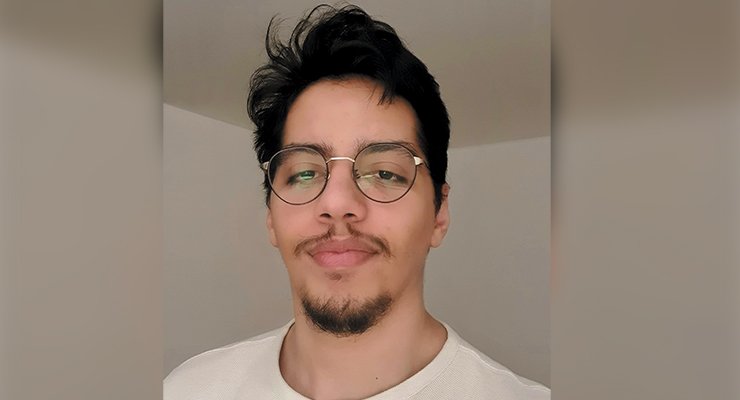Specialty – Sound and Vibration Engineering (AVI)
The Sound and Vibration Engineering (AVI) program trains engineers to meet the societal and environmental challenges posed by sound and vibration in a wide range of sectors: transport, construction, energy, the environment and multimedia. AVI engineers master all the elements needed in mechanical design to improve vibration comfort and the sound environment: dynamic vibration behaviour of mechanical systems, vibro-acoustic coupling, acoustic propagation in different environments. Their skills enable them to model, design and dimension a mechanical system to meet specifications concerning its vibration and sound qualities. It draws on both a foundation of fundamental knowledge and experimental and numerical skills, with an emphasis on the perception of the sound environment.
Pedagogy
Basic training in mechanical engineering includes courses in acoustics and vibration, including an introduction to vibration, signal processing, acoustic engineering and sound design. For students who wish to go even further, the AVI program offers specific courses to deepen their understanding of these themes and support them in their future corporate missions, notably in structural dynamics, numerical simulation in vibro-acoustics, the basics of physical acoustics, room acoustics, porous materials, and experimental practice in acoustics and vibration.
The aim of the AVI course is to develop the skills needed to :
- model the vibratory behaviour and acoustic radiation of a structure in its environment;
- solve structural dynamics problems using numerical computation (finite elements);
- use measurement and signal processing tools dedicated to the experimental vibratory and acoustic study of mechanical systems;
- master the formulation of a complex numerical modelling problem in structural dynamics and acoustics;
- understand room acoustics and acoustic treatment materials to achieve the desired audio performance in terms of reverberation or intelligibility.
In short, the AVI programme offers courses in acoustics and vibration, combining theoretical, experimental and numerical approaches. In addition to these courses, projects are proposed to prepare students for the professional context and teamwork.
Pedagogical team, industrial relations and research
The program's specific courses are taught by a pedagogical team that carries out research in acoustics and vibration at UTC’s Roberval laboratory. Team members are involved in numerous projects with industrial partners in the railway sector (RATP), automotive sector (Renault, PSA Peugeot Citroën, E‑motors), aeronautics (Airbus), space (Ariangroup), public works and construction (Saint Gobain, CSTB) and mechanical engineering (CETIM) sectors.
The team is enriched by players from the business world, who take part in training through conferences and projects carried out with students.
Facilities and infrastructures
AVI students are trained on computer software commonly used in the industrial world, in particular Actran software for vibro-acoustics and Catt-Acoustic software for room acoustics.
As part of the AVI training program, UTC-Compiegne also makes available the main testing resources used in the company:
- vibration test platform (laser vibrometer, modal analysis, rotating machine) ;
- reverberation and semi-anechoic chambers for acoustic measurements;
- sound design laboratory: recording, production, analysis and playback;
- a dedicated vehicle for vibration, acoustic and acoustic design tests.
Internships
In addition to a 6‑month internship as an engineer's assistant in a company, the AVI students complete a 6‑month end-of-studies project as an engineer-in-training in companies or institutes proposing a topic in the field of acoustics or vibration. The program receives more than 3 offers per student.
International outreach
AVI students have the opportunity to study abroad for a semester at a university or for their final year project. Semesters are spent at one of our many partner universities, including Chalmers University of Technology in Sweden, Politecnico di Milano in Italy, Politecnico di Torino in Italy, Universidade de Coimbra in Portugal, Cranfield University of Technology in the UK, Université de Sherbrooke in Canada, Technische universität Berlin (TUB) in Germany, Polytechnique Montréal in Canada, Virginia Tech in the USA…
Various end-of-studies projects are also offered by industrial companies or research institutes in Australia (Marshall Day), Canada (Université de Sherbrooke), the United States (Los Alamos National Laboratory), Germany (Daimler), Belgium (Siemens, Gibson Innovations), Switzerland (Geberit, EMPA), etc.
Professional openings
The AVI program provides general mechanical engineers with expertise they can apply in large corporations, service companies, design offices (research, development, design) or start-ups seeking recognized expertise. Their solid grounding in mechanics, acoustics and vibration enables them to develop their careers as experts or team or project managers.
Job opportunities are mainly in the transportation sector (automotive, aeronautics, naval, rail), but also in renewable energies (wind power, electricity), housing, the environment and research.
60% of job offers come from end-of-study projects carried out by students at companies such as: Airbus, Alstom, CSTB, Daimler, Naval group, Ariane Group, Dyson, PSA, Renault, Siemens, Saint Gobain, Valeo…
53% of students found a job before graduation.
The gross salary with bonuses and benefits on completion of the AVI program is €41,000/year.
Examples of jobs: research and development engineers, design office engineer, consulting engineer, test engineer, calculation engineer, etc.
Médias
More informations about the specialty:
Contact and documentation
Other UTC-IM specialties
- Specialty – Integrated Design in Mechanical Engineering (CMI)
- Specialty – Data Handling and Reliability for Industry (DFI)
- Specialty – Industrial Design Engineering (IDI)
- Specialty – Mechatronics, Actuators, Robotisation and Systems (MARS)
- Specialty – Materials and Technological Innovation (MIT)
- Specialty – Integrated Production and Logistics (PIL)
- Specialty – Simulation in Mechanical Engineering (SIM)
- The Apprenticeship Designer Course (CPT)



